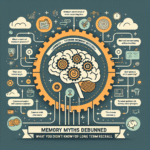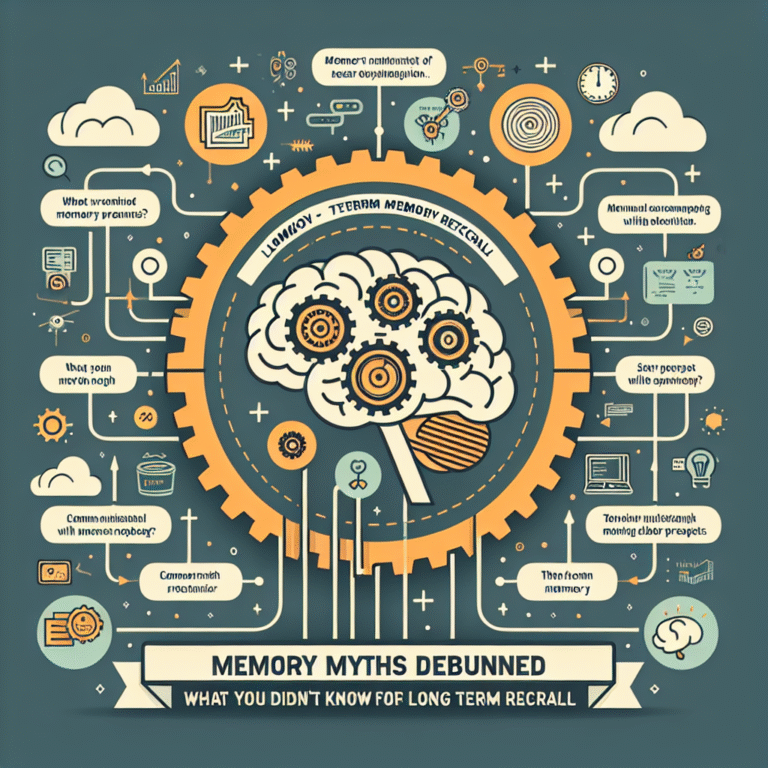
Introduction
Fear is a universal emotion, intricately woven into the fabric of our lives. Understanding Fear Conditioning: How Our Experiences Shape Anxiety is crucial for recognizing how past encounters influence our present—and future. Imagine walking through a park, the sun shining brightly as you enjoy the fresh air, only to suddenly feel a wave of anxiety wash over you triggered by a past trauma. This reaction, rooted in fear conditioning, showcases how experiences can linger in our minds and influence our emotional reactions. In this article, we will explore the mechanisms of fear conditioning, its implications for anxiety, and how we can harness this understanding to transform our lives positively.
The Science of Fear Conditioning
What is Fear Conditioning?
Fear conditioning is a type of learning where a neutral stimulus becomes associated with a fearful response. Coined in the 20th century, this psychological mechanism involves both classical conditioning and operant conditioning principles, explained by famous studies such as John Watson’s Little Albert experiment. In this experiment, a child learned to associate a previously unfeared white rat with loud, frightening noises, resulting in an enduring fear of rats—even in the absence of the noise.
Table 1: Key Components of Fear Conditioning
| Component | Description |
|---|---|
| Unconditioned Stimulus (UCS) | Naturally triggers an emotional response (e.g., a loud noise) |
| Conditioned Stimulus (CS) | Initially neutral stimulus that becomes associated with the UCS (e.g., a white rat) |
| Unconditioned Response (UCR) | The natural emotional response to UCS (e.g., fear from loud noise) |
| Conditioned Response (CR) | Learned emotional response to CS after conditioning (e.g., fear from seeing the rat) |
The Role of Neuroscience
Neuroscientific research has uncovered the brain regions involved in fear conditioning, particularly the amygdala, which processes emotions, and the prefrontal cortex, which regulates fear responses. When exposed to a conditioned stimulus, the amygdala activates, often leading to heightened emotions of fear or anxiety.
Real-world Applications of Fear Conditioning
Case Study 1: Phobias and Treatment
A 30-year-old woman experiences intense anxiety upon seeing dogs due to a childhood incident where she was bitten. This fear conditioning case illustrates how specific experiences shape our anxiety towards stimuli. Treatments like Exposure Therapy gradually desensitize individuals to their fears, demonstrating the power of understanding fear conditioning.
Analysis
This case highlights the efficacy of therapeutic interventions in counteracting fear responses. By revisiting and reprocessing traumatic experiences, individuals can learn to disassociate fear from the initial stimuli.
Case Study 2: PTSD and Trauma
Post-Traumatic Stress Disorder (PTSD) is a severe manifestation of fear conditioning, often resulting from combat experiences, accidents, or assaults. A soldier returning home grapples with anxiety triggers like loud noises or crowded spaces, illustrating how traumatic experiences shape ongoing fear responses. Therapies like EMDR (Eye Movement Desensitization and Reprocessing) aim to reframe these experiences and diminish their emotional grip.
Analysis
This example underscores the complexity of fear conditioning and its profound impact on mental health. By utilizing advanced therapeutic techniques, clinicians can significantly improve PTSD patients’ quality of life.
The Cycle of Fear Conditioning
How Experiences Shape Anxiety
Understanding Fear Conditioning: How Our Experiences Shape Anxiety requires acknowledging the cyclical nature of our responses. Each interaction can perpetuate the cycle of anxiety. For instance:
- Past Trauma: Initial experiences of fear create neural pathways in the brain.
- Reinforcement: Continued exposure to similar conditions reinforces these fears.
- Generalization: Individuals may begin to fear similar stimuli beyond the original trigger, leading to broader anxiety.
This cycle can be illustrated in the chart below, which emphasizes how experiences and responses interact.
Chart: The Cycle of Fear Conditioning
Experience of Fear → Formation of Neural Pathway → Reinforcement Through Repetition → Generalization of Fear → Increased AnxietyBreaking the Cycle
Breaking the cycle of fear conditioning is pivotal for anxiety management. Interventions such as mindfulness, cognitive-behavioral therapy (CBT), and psychoeducation can rewire negative thought patterns and foster resilience.
Practical Strategies for Overcoming Fear Conditioning
1. Mindfulness Techniques
Mindfulness helps ground individuals in the present moment, reducing anxiety by counteracting fear responses linked to past experiences. Techniques like deep breathing and meditation can be invaluable.
2. Exposure Therapy
Gradual exposure to the feared stimulus, combined with coping strategies, can significantly reduce anxiety. By confronting rather than avoiding fear, individuals learn to reassess their responses.
3. Cognitive Restructuring
Cognitive-behavioral practices encourage individuals to challenge and reframe negative thoughts related to their fears. This can shift perceptions and reduce their potency, providing a solid foundation for resilience.
Conclusion
Understanding Fear Conditioning: How Our Experiences Shape Anxiety is more than an academic pursuit; it is a call to action for anyone dealing with anxiety, phobias, or trauma. Through a combination of awareness and therapeutic interventions, we can break free from the shackles of our past experiences. By embracing a journey of self-discovery and healing, we can transform anxiety into empowerment.
FAQs Section
1. What is the difference between fear conditioning and phobia?
Fear conditioning involves learning to associate a neutral stimulus with fear, while a phobia is an intense, persistent fear of a specific object or situation that often leads to avoidance behavior.
2. Can fear conditioning be reversed?
Yes, through therapeutic techniques like exposure therapy and cognitive-behavioral therapy, individuals can desensitize themselves to fear stimuli and reframe their responses.
3. How common is fear conditioning in everyday life?
Fear conditioning is quite common, as many individuals respond anxiously to learned experiences, whether from childhood or adulthood.
4. What role does the amygdala play in fear conditioning?
The amygdala is critical for processing emotions and fear responses. It helps to activate fear responses when exposed to stimuli that trigger conditioned memories.
5. Are there any biological factors involved in fear conditioning?
Yes, genetic predispositions and neurobiological factors can influence how individuals learn fear and respond to anxiety, making some people more susceptible to fear conditioning than others.
By understanding the mechanisms behind fear conditioning and its impact on anxiety, we take significant steps toward improving our mental health. Embracing this knowledge not only empowers us but also promotes emotional resilience and well-being.
















